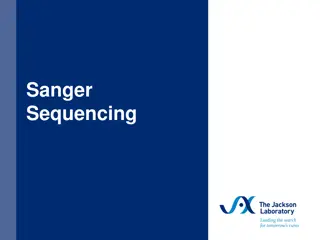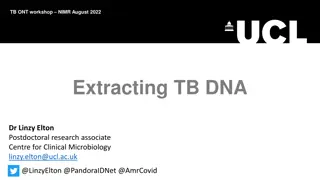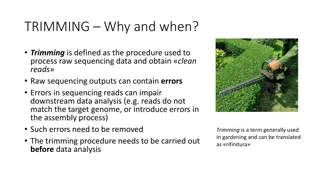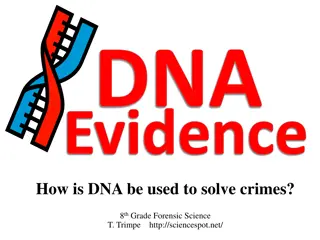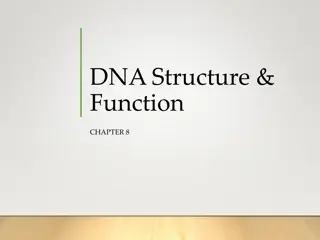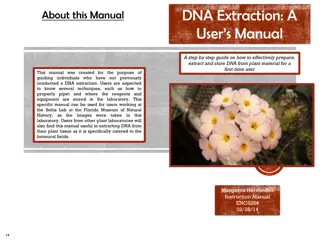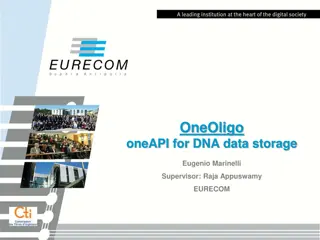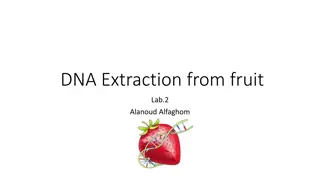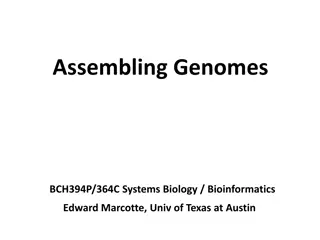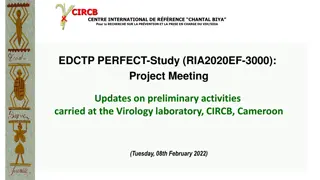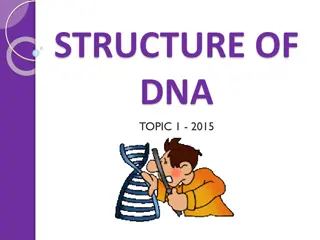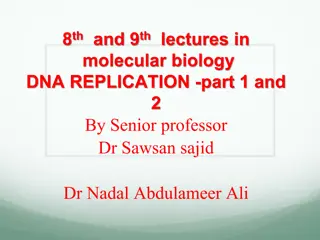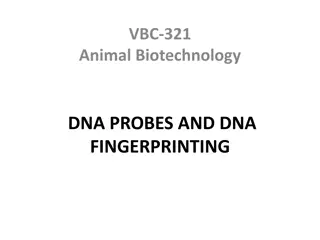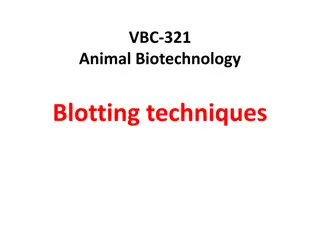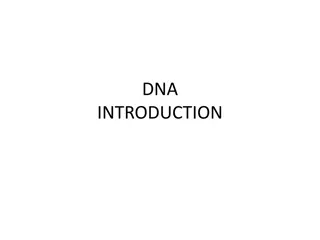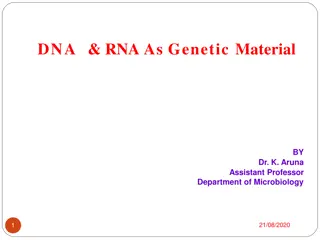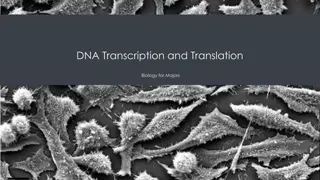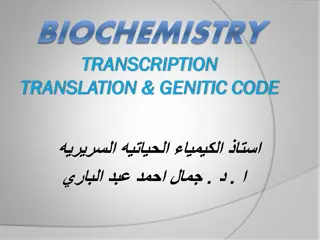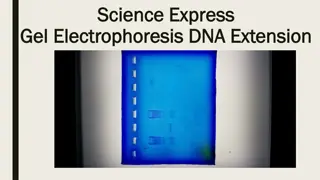Understanding Sanger DNA Sequencing Procedure
Overview of Sanger (dideoxy) DNA sequencing, involving deoxynucleotides and dye-labeled dideoxynucleotides to image DNA band sizes. The simulation model includes steps like denaturing DNA, annealing primers, and synthesizing DNA chains using dNTPs and ddNTPs. The process culminates in electrophoresis to identify DNA sequences.
Download Presentation

Please find below an Image/Link to download the presentation.
The content on the website is provided AS IS for your information and personal use only. It may not be sold, licensed, or shared on other websites without obtaining consent from the author. Download presentation by click this link. If you encounter any issues during the download, it is possible that the publisher has removed the file from their server.
E N D
Presentation Transcript
A B deoxynucleotide (dNTP) - dideoxynucleotide (ddNTP) -
Sanger (dideoxy) DNA sequencing procedure overview The reaction is a DNA synthesis reaction which involves: a high concentration of regular deoxynucleotides a low concentration of dye-labeled dideoxynucleotides Each of the four dideoxynucleotides (A,T,C,G) is labeled with a different color dye. After the DNA synthesis reaction, the DNA produced is imaged during electrophoresis to detect dye colors associated with band sizes.
Materials for DNA sequencing model Blocks represent nucleotides dNTPs A = black T = maroon C = brown G = white Paper represents the template DNA, which we will be determining the sequence of. ddNTPs (dye labeled) A = orange T = yellow C = lt blue G = green The classroom represents a microtube, and each student represents a DNA polymerase.
First steps in simulation 1) Make two copies of the primer; the sequence is 5 ATT 3 Composed of deoxynucleotides. This would be modeled with a chain of 5 black- maroon-maroon 3 dNTPs A = black T = maroon C = brown G = white 2) Denature the DNA by cutting/tearing the paper to separate the two strands. In reality, this would be accomplished by heating the sample. ddNTPs (dye labeled) A = orange T = yellow C = lt blue G = green 3) Anneal the primer to the template strand
Modeling DNA synthesis Roll die If 1-5 is rolled, incorporate the appropriate deoxynucleotide at the next position If 6 is rolled, incorporate the appropriate dideoxynucleotide at the next position, and synthesis of that chain is terminated dNTPs A = black T = maroon C = brown G = white ddNTPs (dye labeled) A = orange T = yellow C = lt blue G = green Repeat above steps until a dideoxynucleotide is incorporated Synthesize one strand until it is terminated, then denature those two and synthesize a second strand using another 5 ATT3 primer. Synthesize carefully. Keep your two newly synthesized DNA chains. After all synthesis is complete, the products of synthesis will be electrophoresed.
3 5 G T A A G C T G C A T A C A T T C G A C G T A T 5 3 3 5 G T A A G C T G C A T A C A T T C G A C G T A T 5 3
A B deoxynucleotide (dNTP) - dideoxynucleotide (ddNTP) -


